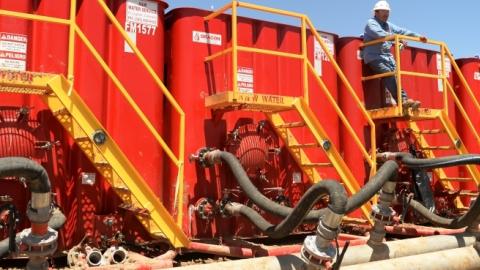Some government reports are meant less to convey information than to conceal it. The recent Bureau of Land Management (BLM) analysis of the new Obama rules governing stimulation of oil and gas wells (fracking) on federal land seems to be a case in point. Nevertheless, the report reveals some striking truths about the rules.
While the BLM study measures both the benefits and the costs of the new rules, the study almost certainly understates the costs. An Oklahoma City University assessment, for instance, disputes BLM’s very low estimate of the costs of its proposed new standards for cement casing of wellbores, a key factor in the cost analysis.
At least equally troubling is BLM’s claim that the new rules will cause no delays in completing wells. The Bureau has been chronically slow in processing applications for permits to drill. Whereas some states resolve such matters in 10 business days, in 2014 BLM’s average time was 227 days. To be fair, the inertia of the federal legal process doesn’t help.
Nonetheless, a June 2014 report by the Interior Department’s Inspector General found that BLM’s management problems were also a cause of delays. Time and again, BLM has promised that its performance will improve. Approval times, though, show no clear signs of decreasing; indeed, they rose again in 2014. In light of this record, the claim that BLM can handle the new rules without imposing still more costly delays strains credulity.
BLM’s low-ball cost numbers are just barely enough to prevent clear evidence that the rules will lead to net costs. To measure benefits, BLM estimates how much the rules would reduce the costs of remedying harm purportedly caused by fracking on federal land. Even putting aside doubts about whether remediating these effects would really be economically justified, the study findings still suggest that the rules are unlikely to be worth what they will cost.
BLM assumes that the extent of the rules’ benefits hinges on two factors. One is the level of risk posed by fracing. The second is the extent of the costs required to remedy the supposed environmental harms.
BLM finds that with low estimates of both fracking’s risks and their remediation costs, the new rules entail net social costs. With the high estimates, it finds that the new rules would yield net gains, albeit tiny ones. In fact, the net social costs with low risks and low remediation costs exceed the social gains with high risk and high remediation costs by nearly a factor of five.
It seems highly likely, then, that unless risks and remediation costs are at the peak of the range considered by BLM, or very near it, the new rules will produce net social costs. The report tries to cloud the inference by claiming that the new rules might induce drillers to use fewer chemicals and to change the mix of chemicals. Maybe so, but inducing drillers to use fewer chemicals and to alter their chemical mixtures entails costs as well as benefits. The report never shows that the resulting changes would produce net benefits, let alone that the hypothetical gains would be big enough to reverse the inference that the rules’ total effect is negative.
The good news about the Administration’s new fracking rules is that they can only do limited harm. In 2014, onshore federal lands produced just 4.8 percent of total U.S. oil output. The bad news is that this paltry output is not for lack of resource endowment. Almost 15 percent of the total U.S. proven oil reserves lie beneath onshore federal land. The lands produce so little largely because of wasteful federal laws and red tape.
Interior Department officials predict that states and private land owners might adopt the new rules as a model. Given the relative productivity of the two regulatory regimes, one can only hope that events will prove them to be no better as prophets than they are as policy makers.


















